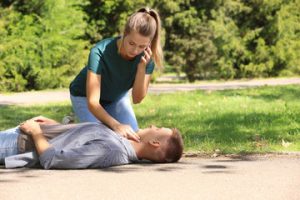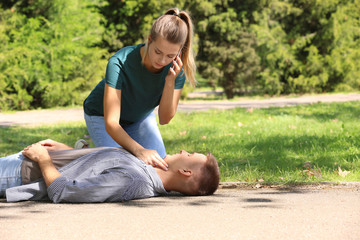Understand the different first aid procedures to use for an unconscious victim, beginning with how to ascertain their consciousness.
Like always, accidents are unforeseen and often find us unprepared for what happens. This results in a number of casualties who may be in dire need of immediate medical attention. Delayed assistance may be among the leading cause of accident victims today. Here we will focus on how to identify and handle unconscious victims of accidents today.For those looking for CPR courses online, enroll for Ottawa First Aid Training classes and equip yourself with the necessary first aid skills not just for unconscious victims but any member of your society that may need your help. Check out below the legal procedures to be followed in administering medical assistance to unconscious accident victims.

Check for Consciousness and Breathing
This is the first step of any first aid for unconscious casualties, confirming their breathing, and responsiveness. By being unconscious one is rendered unable to respond to sound or touch and in worse cases, they may even fail to breathe or lack pulse. This condition can be caused by illnesses, poisoning, and accidents and even fatal blows to the head or chest. Temporary unconsciousness can be as a result of fainting, reduction in body sugar and low pressure of the blood.
It is not easy to predict the unconsciousness of a victim, but there are signs you can always look for before they blackout. A good number of people may be confused, feel dizzy, experience rapid heartbeats or just fail to respond to anything as a result of body shock or trauma. After looking for a CPR course online, you get the necessary skills to know how to deal with these eventualities.
First Aid Procedure
The steps of first aid are always definite in this case, always commence the process by checking for consciousness from the victim. Start by dialling or having bystanders call for emergency assistance by dialing 911. You can reposition their back when they start breathing, but otherwise, you should start your first aid help before it becomes too late. Start by elevating their legs to about 12 or so inches from the ground level. If you have any tight clothing like belts, ties, and jewelry, help in removing them to allow for proper circulation or flow of blood in their body.
Confirm for open airway by checking their mouths after tilting the heads slightly upwards. You can then immediately begin cardiopulmonary resuscitation on the casualty before the arrival of experienced medical practitioners. You may also be needed to apply other first aid techniques like stopping bleeding and dressing open cuts and wound s to prevent further contamination.
Cardiopulmonary Resuscitation
CPR is a universally accepted form of assistance that people could use to help those with blood circulation complications, for instance, cardiac arrest and heart attack victims. It entails positioning the victim on their backs and giving them repetitive chest compressions to restore their blood flow and consciousness. Place your hand at their chest center (sternum) and with straight elbows give chest pushes of about 100 compressions in every minute. For certified first aid experts, they can alternate chest compressions to mouth-to-mouth breathing even though it is greatly advised against for new first aiders. Repeat the process taking short pauses in between to check for pulse or breathing.
Treatment
The treatment for unconsciousness varies depending on the cause of the situation. A victim whose consciousness is as a result of low blood pressure can be treated with an injection from a certified physician to increase their blood pressure in the body. The same situation applies to unconsciousness resulting from low blood sugar in the body; an injection may just be what they need to get back on their feet.
Effects of Delayed Assistance
There are a lot of complications that could arise as a result of delayed medical assistance for an unconscious casualty. When the human body goes into a coma, the response time by those around them is what determines their rate of recuperation or even death. The body may experience shock, and due to lack of oxygenated blood, it may start experiencing death. Remember other post-CPR effects may include broken ribs from the repetitive CPR by the first aiders. Nonetheless, it is your duty as a first aider to ensure that the casualty receives advanced medical assistance from a certified team of professionals to amplify their chances of recuperation.
Conclusion
The world is dire need of more first aiders based on the rising number of deaths resulting from heart attacks and cardiac arrests. More members of the public worldwide are encouraged to enroll for CPR training classes and equip themselves with lifesaving skills that could benefit everyone in society. The more first-aid-aware people there are in a community, the better the chances of survival it has when tragedy comes knocking on their front doors. Make yourself the community hero you have always desired to be by being in a position not just to contain a situation but also save lives and being an actual hero.








